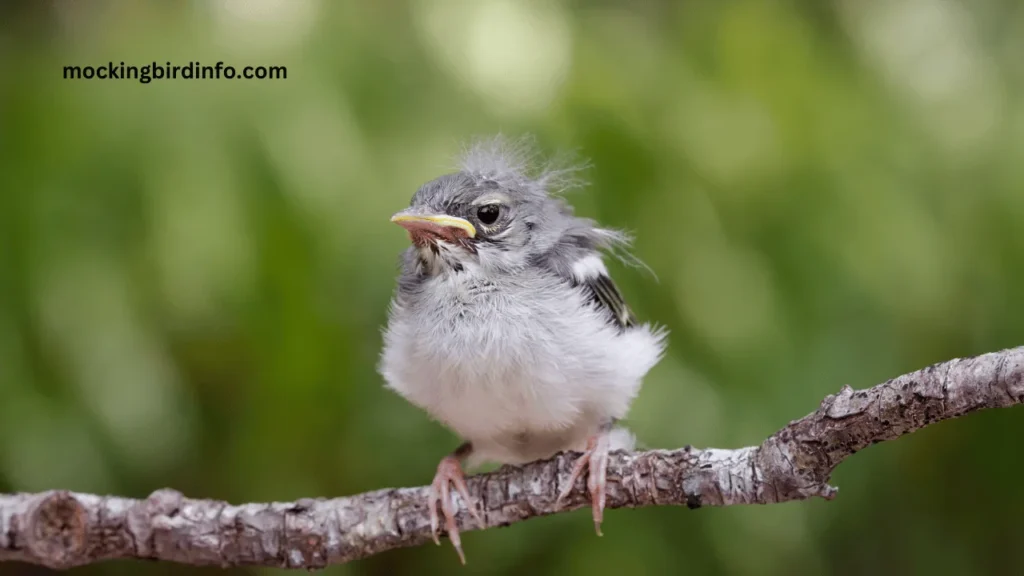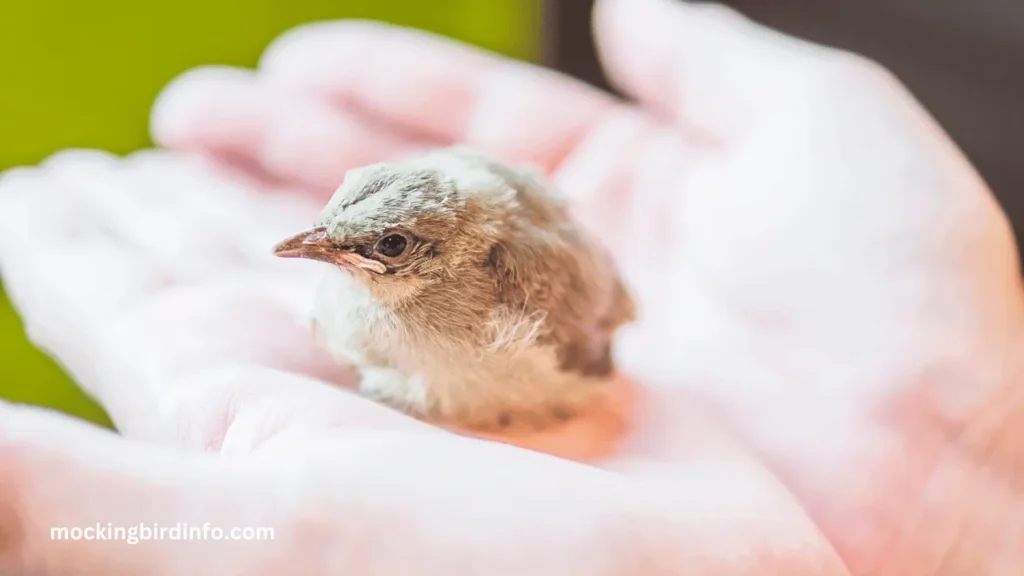Imagine walking through a peaceful garden, when suddenly, you hear the unmistakable song of a mockingbird—a melody of various birds’ calls combined into a symphony.
But as you pause to listen, you notice something startling: the mockingbird is aggressively chasing another bird away from the area.
This kind of territorial behavior is typical of mockingbirds, but it raises an important question: Do mockingbirds kill other baby birds as part of their territorial instincts?
Mockingbirds, known for their ability to mimic sounds and their territorial nature, are not the most obvious candidates for such violent behavior.
However, their aggressive defense of their nests and their competition for food and nesting sites can lead to interactions with other birds that might not always end well.
It’s important to understand the nuances of mockingbird behavior and the factors that influence their actions.
This article will explore the complex relationship between mockingbirds and other birds, addressing whether they pose a direct threat to other baby birds.
It will also delve into territorial instincts, environmental factors, and the role of human activities in influencing these interactions. By the end, you’ll gain a deeper understanding of how mockingbirds behave and the steps we can take to minimize conflict in our own backyards.

Contents
1. Territorial Behavior and Nest Defense
Mockingbirds are highly territorial creatures, especially during the breeding season. This is the time when their aggressive behavior peaks. They defend their nests with vigor, using their loud and diverse calls to warn other birds and animals to stay away.
They may even swoop down on larger animals, including humans, if they venture too close to their nests. However, the question remains: Do they extend this aggression to other birds’ young?
While mockingbirds are primarily known for defending their own nestlings against predators like snakes and hawks, they are also very sensitive to other birds intruding in their territory.
In some cases, they may harm or even displace nestlings of other bird species, especially if they feel their nesting site is threatened. This behavior is generally reactive rather than predatory; it is a defense mechanism to ensure their offspring’s survival rather than an attempt to kill.
Nest predation by mockingbirds is not common, but it can happen under certain conditions. For instance, if a mockingbird’s territory overlaps with that of a smaller bird, and that bird’s eggs or chicks are seen as a potential competition for resources, the mockingbird may take aggressive action.
They might destroy eggs, push chicks out of nests, or even attack the nestlings. These acts are typically driven by the instinct to protect their own offspring and secure food and nesting space.
2. Factors Influencing Aggression
Several factors contribute to the intensity of aggression in mockingbirds. The most significant is the breeding season. During this period, mockingbirds are particularly territorial, as their primary goal is to protect their eggs and chicks from any perceived threat.
Their aggression towards other birds—especially those that might be competing for nesting sites or food—becomes more pronounced. Food availability plays a crucial role in the level of aggression a mockingbird displays.
In times of food scarcity, competition becomes fiercer. Mockingbirds are omnivorous and rely on insects, fruits, and small animals for sustenance.
When food is limited, they may become more aggressive in defending their territory, attacking not just other birds but also mammals and humans that encroach on their feeding grounds.
Habitat quality is another critical factor. In areas with fragmented habitats or urbanized landscapes, birds, including mockingbirds, are forced into smaller spaces.
This makes competition for resources more intense. Mockingbirds, like other species, may resort to aggressive tactics to secure their nesting sites and food sources.
Loss of suitable habitats means more birds are crowded into smaller areas, increasing the likelihood of violent interactions.

3. The Role of Human Activities
Human actions can exacerbate the aggressive behavior of mockingbirds. For instance, bird feeders are common in suburban and urban gardens, but they can inadvertently cause competition.
When multiple bird species converge on the same food source, it can lead to fighting and territorial disputes. Mockingbirds, being dominant in many areas, may drive other birds away, particularly if food is scarce.
Moreover, habitat alteration due to urbanization and deforestation has shrunk natural bird habitats, forcing mockingbirds and other species into closer proximity. This increased density of bird populations leads to heightened territorial aggression.
When resources like food and nesting sites become limited, mockingbirds may resort to violent tactics to secure their survival and that of their offspring.
The introduction of non-native species also has an impact. Birds like house sparrows and European starlings are more aggressive than native species and often displace local bird populations.
Mockingbirds may not actively hunt these birds’ young, but they will certainly defend their territory more fiercely against them, sometimes resulting in displacement or destruction of other species’ nests.
4. Nest Predation and Perceived Threats
Although mockingbirds are not considered primary predators, their defensive behavior can sometimes result in nest predation. The most common instances of this occur when a mockingbird perceives another bird’s nest as a threat to its own offspring.
For example, if a rival bird species builds its nest too close to a mockingbird’s, the mockingbird might see it as an intrusion and either destroy the eggs or evict the nestlings.
Mockingbirds have also been known to attack the young of other birds in rare cases when their territory is threatened. However, this is more about territorial defense than predation.
The mockingbird does not typically seek out other birds’ babies to kill but will act aggressively when they feel their own territory and young are in danger. This can result in displacement, rather than outright death, of other birds’ young.
5. Minimizing Conflict
While mockingbird aggression is a natural part of their behavior, there are ways to reduce conflicts between bird species. One way is by strategically placing bird feeders.
Positioning feeders in different areas of your yard can help avoid the concentration of too many birds in one spot, thus reducing competition.
Additionally, planting native plants that provide natural food and shelter for birds can help reduce the need for artificial feeders and create a more balanced ecosystem.
A well-maintained yard with diverse plants can attract various species of birds, allowing them to coexist peacefully.
To minimize aggression, it’s also important to protect natural habitats. Whether it’s maintaining woodland areas or preserving green spaces, habitat conservation helps ensure that birds, including mockingbirds, have access to sufficient resources.
Encouraging native vegetation not only provides food and shelter for mockingbirds but also helps maintain ecological balance by supporting the entire local bird population.
Finally, cleaning bird feeders regularly is crucial in preventing the spread of disease and maintaining healthy environments for all birds. By following these steps, we can create environments where mockingbirds and other bird species can thrive without unnecessary conflict.
Conclusion
While mockingbirds are not typically known to kill baby birds, their aggressive territorial behavior during the breeding season can lead to the displacement or harm of other birds’ nests.
They do not actively seek out other birds’ young, but in the course of defending their own offspring and territory, they may destroy eggs or chase away nestlings of other species.
The behavior of mockingbirds is influenced by a variety of factors, including food availability, habitat quality, and human activity.
By promoting habitat conservation, minimizing human interference, and understanding the dynamics of territorial behavior, we can create environments where all species, including mockingbirds, coexist peacefully.
We should strive to protect our birds and the habitats they rely on. By being mindful of how we manage our yards and gardens, we can minimize conflicts between species and contribute to bird conservation efforts that ensure a harmonious future for all bird populations.
FAQs
1. Do mockingbirds kill other birds’ babies?
Mockingbirds rarely kill other birds’ young but may displace or harm nestlings if they perceive them as threats to their territory.
2. Why are mockingbirds so aggressive?
Mockingbirds become especially aggressive during the breeding season as they defend their nests and territory.
3. Do mockingbirds eat other birds’ eggs?
While mockingbirds are omnivorous, they are not primary egg predators. However, they may destroy eggs of other birds if they feel their territory is threatened.
4. How do mockingbirds protect their nests?
Mockingbirds use loud vocalizations and physical aggression to drive away intruders from their nesting area.
5. Can mockingbirds coexist with other birds?
Yes, mockingbirds can coexist with other birds but may become more aggressive if resources are scarce or if their nests are threatened.
6. How can I reduce bird conflicts in my yard?
Space out bird feeders, provide native plants, and create diverse habitats to reduce competition and minimize conflicts.








